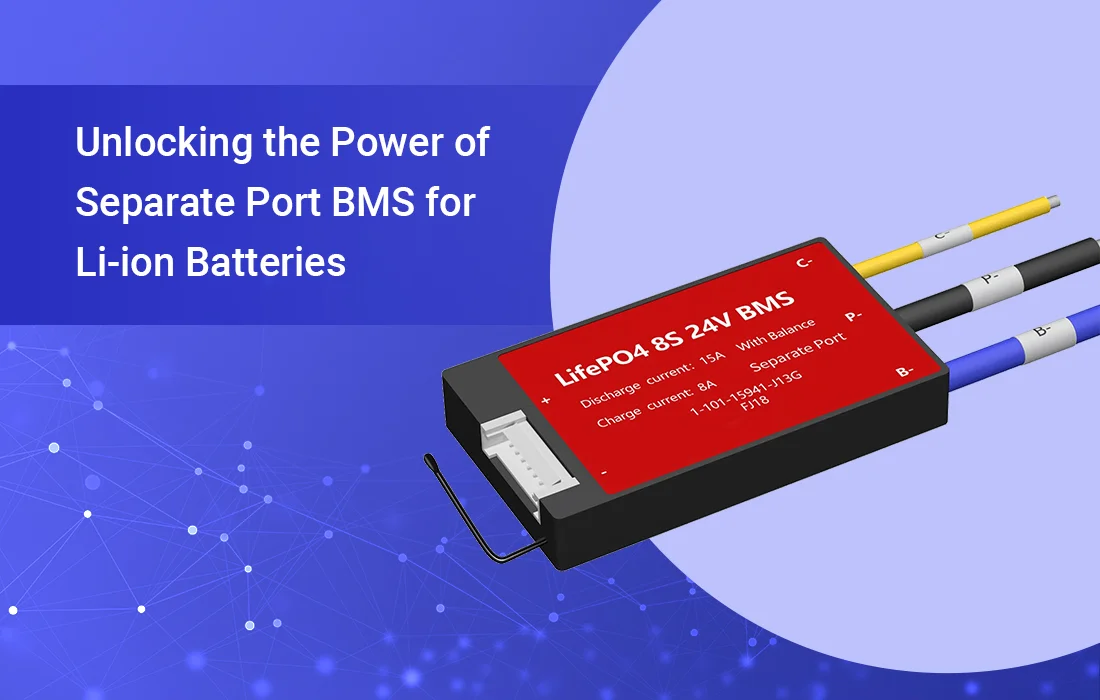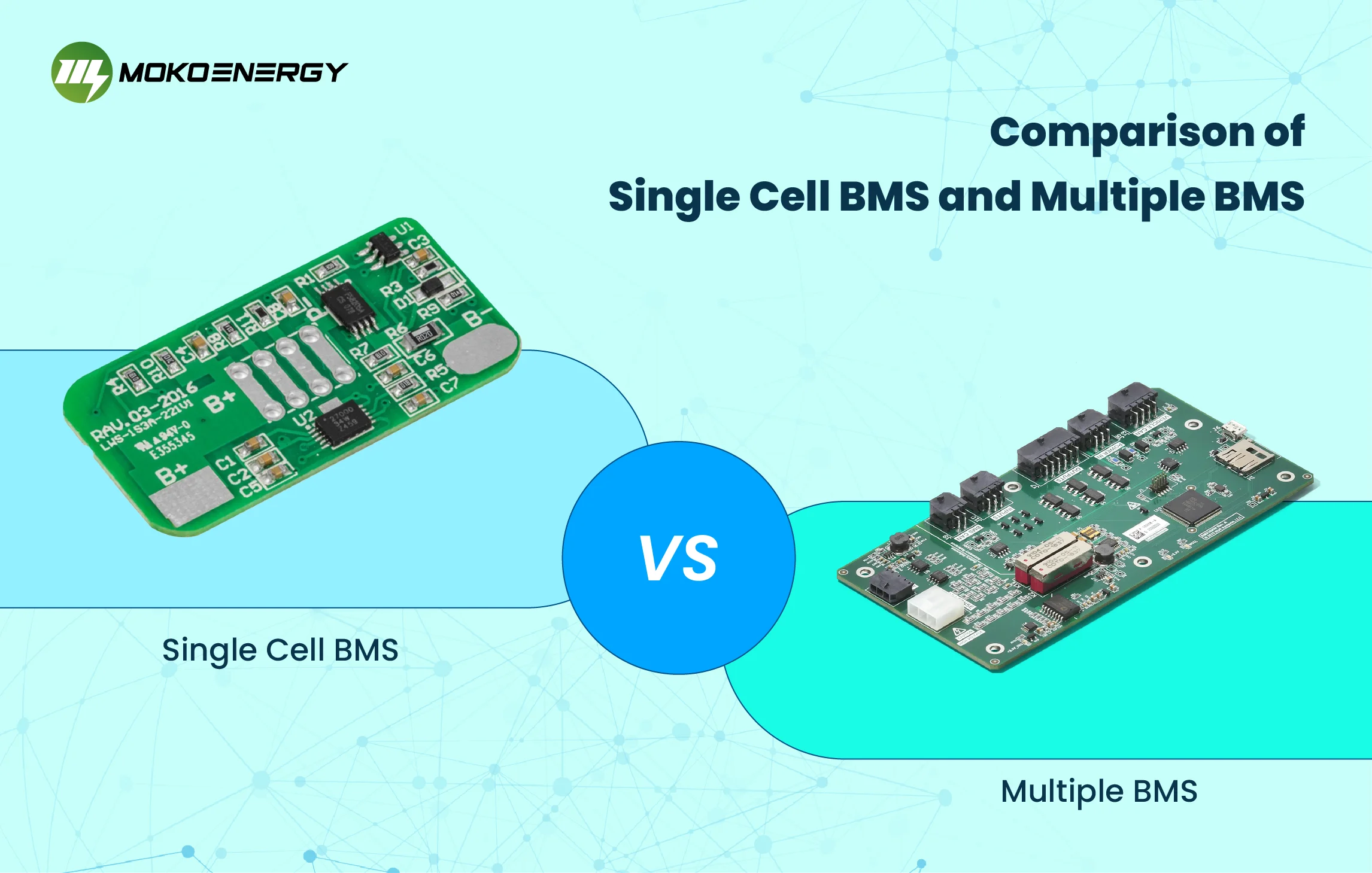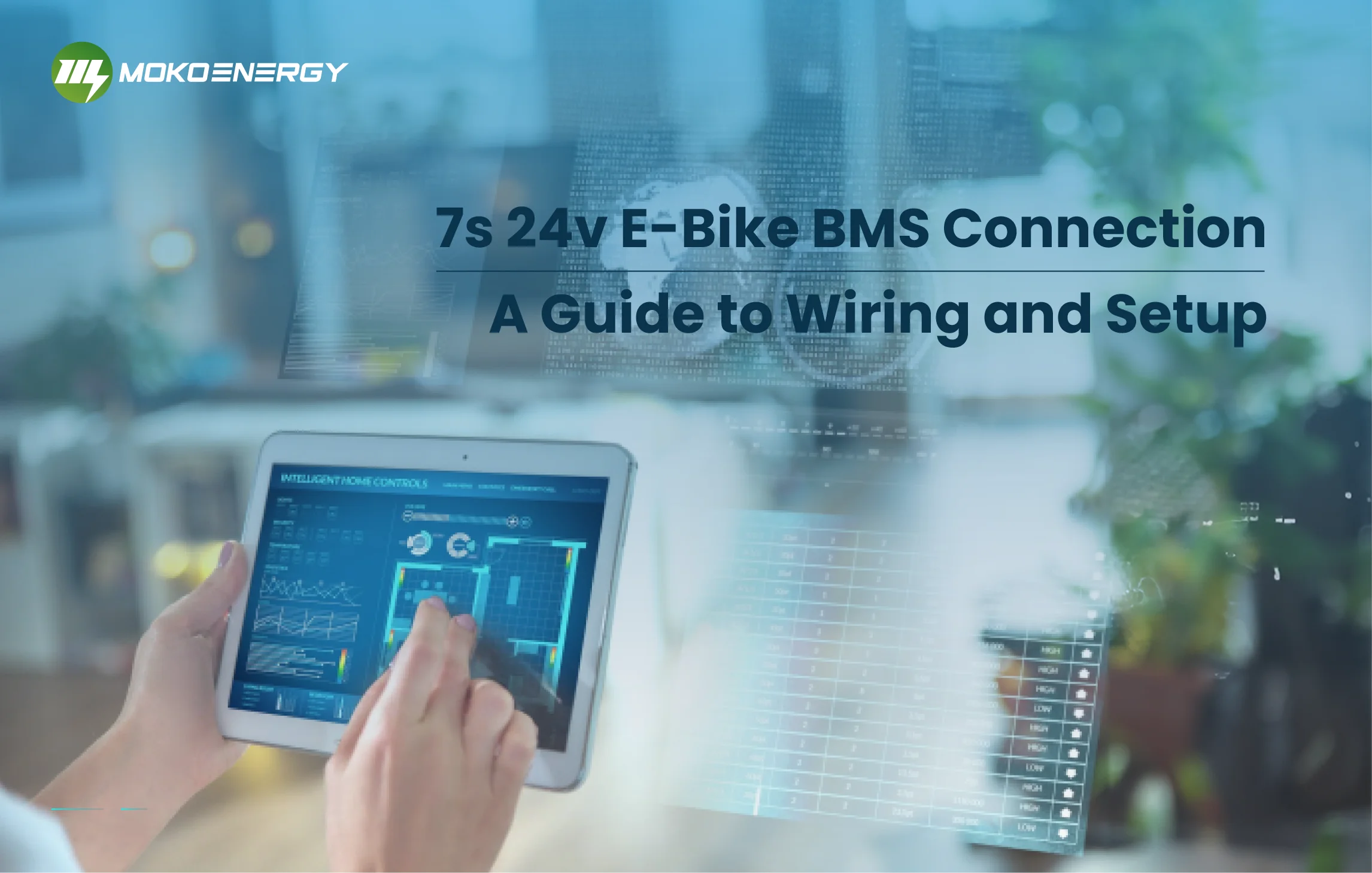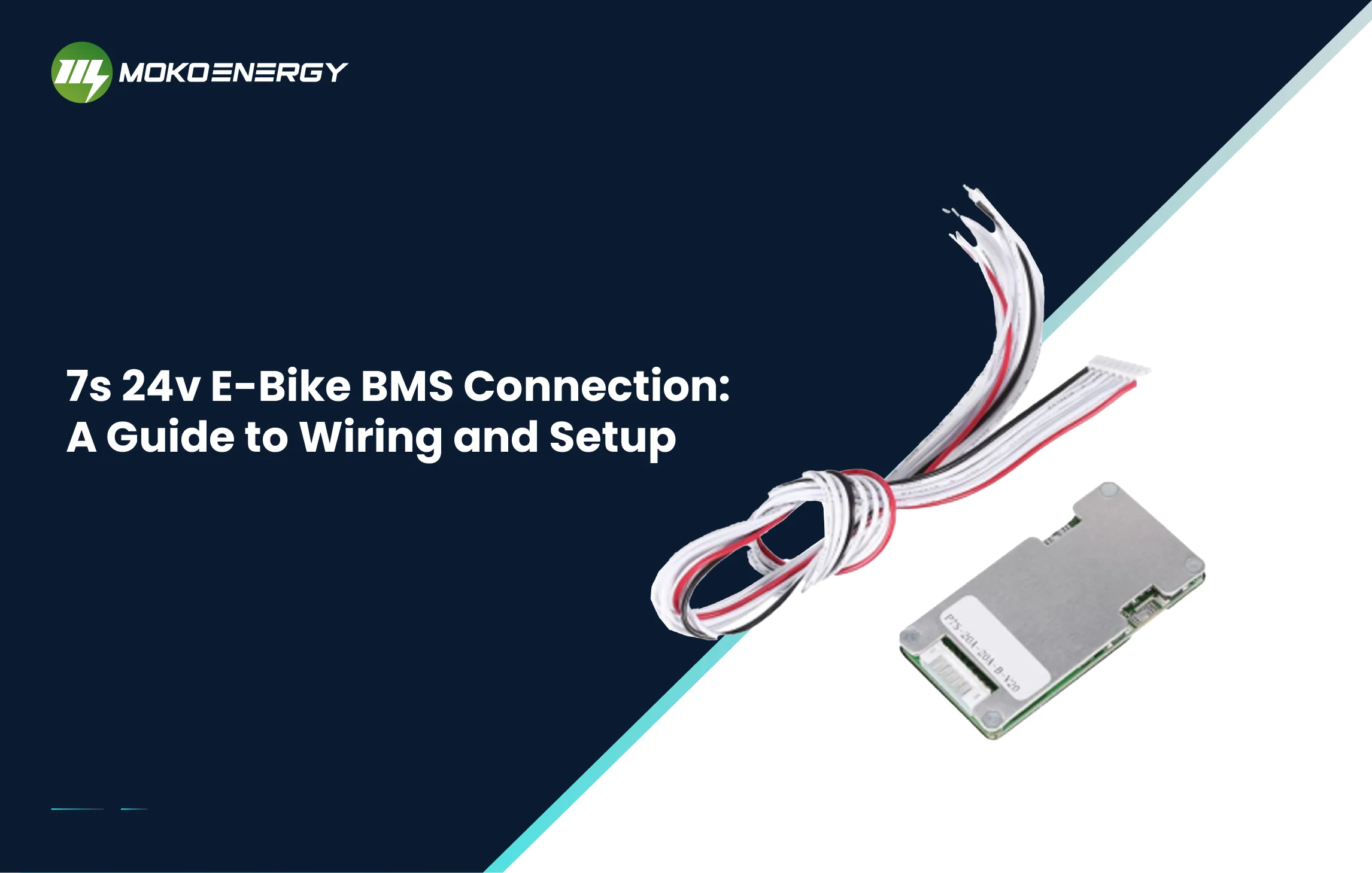Introduction
From electric vehicles to renewable energy installations, high-performance batteries like Lithium-ion batteries are at the forefront of innovation. However, maximizing their potential requires a robust and intelligent battery management system (BMS). While reliable when managing the battery’s performance and safety, traditional Common Port BMS solutions may fall short in meeting the demanding requirements of today’s cutting-edge applications. This is where Separate Port BMS shines, offering a revolutionary approach to battery management that promises to reshape the industry. This blog will explore the cutting-edge world of Separate Port BMS and unlock its advantages over Common Port BMS. Learn how it works, its applications, and how to choose the perfect one for your Li-ion battery needs.
What is a Separate Port BMS?
A Separate Port BMS separates the communication and power paths, ensuring enhanced safety and improved battery performance. Unlike Common Port BMS, where a single port handles both data and power transmission, it dedicates individual ports for communication and power, creating a redundant and failsafe system. It offers individualized monitoring and control for each cell, ensuring optimal performance and longevity. It has the following advantages:
- Increased safety: Keep the communication lines and power supply separate. If an electrical issue like a short circuit were to occur, this isolation would prevent a minor fault from escalating into a disastrous system failure.
- Improved performance: Separate ports allow for optimized data transmission and power delivery, resulting in more efficient battery utilization and longer lifespan.
- Easier maintenance: With independent ports, diagnostics, and maintenance tasks can be performed without disrupting the power supply, minimizing downtime.
How Does a Separate Port BMS Work?
The communication port manages all data exchange between the BMS and the battery pack. By leveraging advanced algorithms, Separate Port BMS guarantees unparalleled efficiency and longevity for lithium-ion batteries. Simultaneously, the dedicated power port oversees the charging and discharging processes, ensuring optimal energy flow and efficient power management. Separate Port monitors the behavior of each cell, ensuring optimal charging and discharging cycles while preventing issues like overcharging, overheating, and voltage imbalances.
Applications of Separate Port BMS
It stands out as an essential solution across various industries and applications ensures battery safety and performance and be applied in the following fields:
Electric Vehicles (EVs)
The effectiveness of EVs hinges on unlocking the maximum potential of lithium-ion battery packs. The BMS emerges as a critical player in guaranteeing the safety and peak performance of these high-voltage battery systems. It facilitates extended driving ranges, quicker charging intervals, and heightened reliability. With its redundant and fail-safe design, the Separate Port BMS offers an extra shield against potential risks, fostering trust among EV owners and manufacturers alike.
Energy Storage Systems (ESS)
Effective energy storage poses a key hurdle. Separate Port BMS solutions take a leading role in addressing this challenge, guaranteeing the peak performance and durability of extensive battery storage setups. By meticulously monitoring and managing these complex systems, BMS with separate ports facilitates smooth energy storage and distribution, ensuring a consistent and uninterrupted flow of clean energy.
Industrial Equipment and Machinery
From forklifts and mining equipment to heavy machinery, these devices often operate in harsh environments, subjecting their batteries to extreme conditions. Separate Port BMS is engineered to withstand these challenging conditions, providing a robust and failsafe solution that ensures uninterrupted operation and maximizes the lifespan of the battery systems.
Renewable Energy Installations
Renewable energy installations often rely on robust battery storage systems to store and distribute energy efficiently. BMS with separate ports plays a crucial role in ensuring the optimal performance and longevity of these battery systems, enabling seamless integration of renewable energy sources into the grid.
Backup Power Systems
Separate Port BMS ensures that these backup systems, often relying on large-scale lithium-ion battery banks, operate at peak efficiency and remain ready to seamlessly take over in the event of a power outage, minimizing downtime and ensuring continuous operation.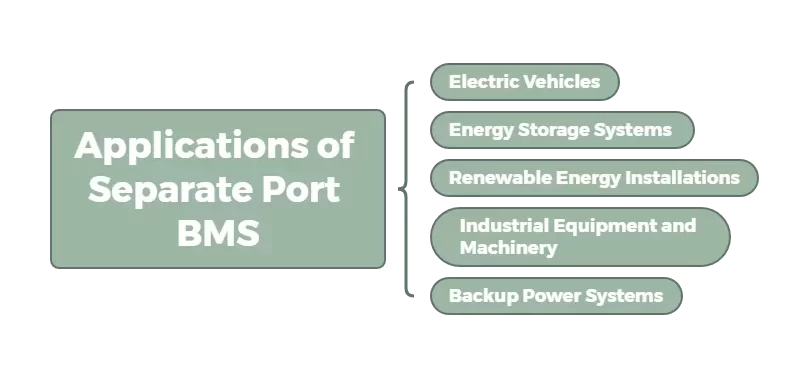
Across these diverse applications, it emerges as a transformative technology, redefining the standards of safety, performance, and reliability in lithium-ion battery management. As industries continue to embrace electrification and sustainable energy solutions, the adoption of Separate Port BMS will become increasingly crucial, paving the way for a more efficient and sustainable future.
How to Choose the Right BMS for Your Li-ion Battery?
Selecting the appropriate Separate Port BMS for your lithium-ion battery application is crucial to maximize its potential. Here are some key factors to consider:
- Battery Chemistry: Different lithium-ion battery chemistries (e.g., LFP, NMC, LCO) have varying characteristics and requirements. Choose a suitable BMS specifically designed for your battery’s chemistry.
- Capacity and Voltage: Ensure the BMS can handle the desired battery capacity and voltage range, as exceeding these limits can compromise safety and performance.
- Current and Temperature Range: Consider the maximum current draw and operating temperature range of your application to select a BMS that can withstand these conditions.
- Safety Certifications: Look for single port BMS solutions that comply with relevant safety standards and certifications, such as UL, CE, or UN38.3, ensuring adherence to industry best practices.
- Integration and Compatibility: Evaluate the compatibility of the BMS with your existing systems and infrastructure to ensure seamless integration and minimize potential compatibility issues.
Can Separate Port BMS Replace Common Port BMS?
While Common Port BMS solutions have served the industry well, the emergence of separate one offers a compelling alternative, especially for applications demanding heightened safety and performance. In scenarios where battery failure could result in severe consequences, such as electric vehicles or critical infrastructure, the added layers of protection provided by Separate Port BMS make it a superior choice.
However, it’s important to note that Common Port BMS may still be suitable for less demanding applications or scenarios where cost is a primary concern. The decision to adopt a Separate Port BMS should be based on a thorough evaluation of the specific requirements and operating conditions.
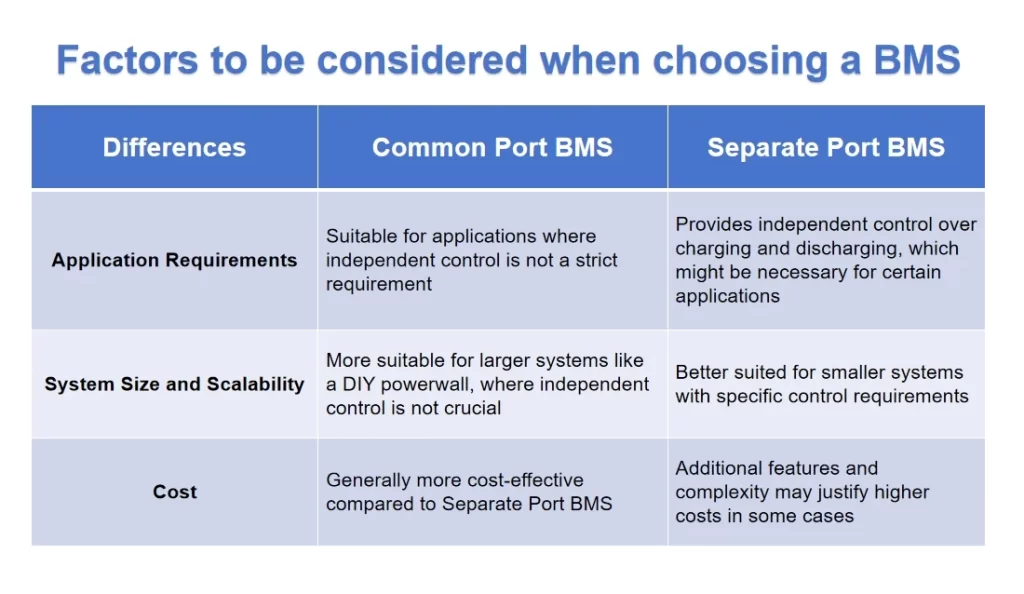 What Can MOKOEnergy Do
What Can MOKOEnergy Do
With a deep understanding of the challenges faced by the industry, MOKOEnergy has dedicated itself to developing innovative Separate Port BMS solutions that redefine what’s possible in lithium-ion battery management. Our BMS offerings are meticulously engineered to deliver unparalleled safety, performance, and reliability. From electric vehicles to renewable energy storage, MOKOEnergy’s solutions have been rigorously tested and validated to meet the highest industry standards.
Whether you’re in the electric vehicle industry, renewable energy sector, or any other field that relies on high-performance lithium-ion batteries, partnering with a trusted provider like MOKOEnergy can unlock the full potential of this game-changing technology.
Take the first step towards a safer, more efficient, and sustainable future – explore MOKOEnergy’s BMS solutions today and experience the power of cutting-edge battery management.
Frequently Asked Questions (FAQs)
Q: Is Separate Port BMS more expensive than Common Port BMS?
A: While its solutions may have a higher upfront cost due to their advanced design and additional components, the long-term benefits in terms of safety, performance, and longevity often outweigh the initial investment, especially for critical applications.
Q: Can Separate Port BMS be retrofitted to existing battery systems?
A: Yes, in many cases, it can be integrated into existing battery systems, provided the necessary infrastructure and compatibility are in place. However, it’s essential to consult with experienced professionals to ensure proper implementation.
Q: How does Separate Port BMS handle battery balancing?
A: It employs advanced battery balancing algorithms to ensure each cell in the battery pack is charged and discharged evenly, maximizing the overall capacity and extending the battery’s lifespan.

